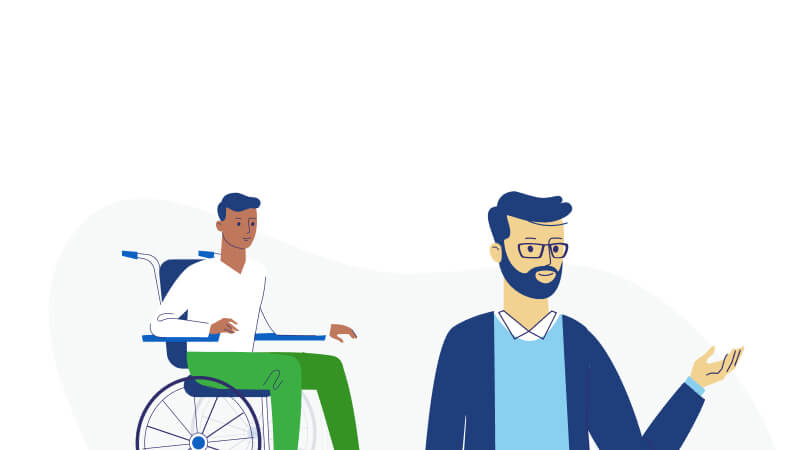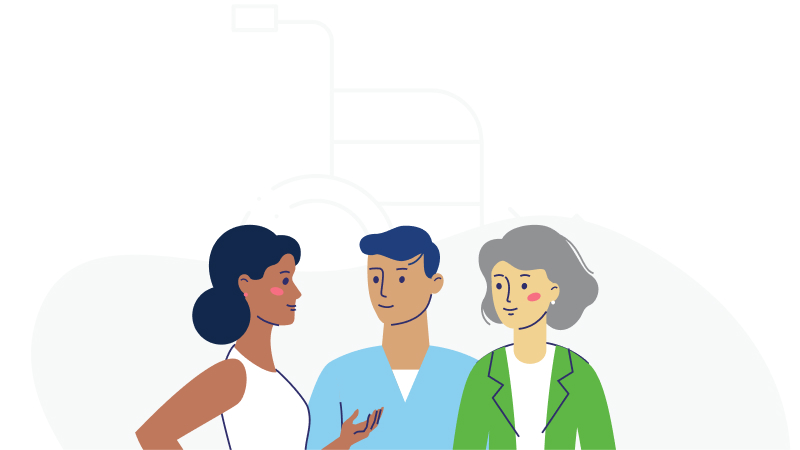Step 1
Your doctor or health service refers you to an assessment service. This could be an occupational therapist or a driving assessment service.
Your doctor, practice nurse, health professional or specialist will ask you a few questions to better understand the problem. They will then refer you to the right service to look at ways to help provide a solution.
Step 2
Your therapist or assessor will discuss with you what is needed to enable you to get to or from work or study, or to look after someone in your care.
The assessor or occupational therapist will ask you about the problems you have getting from place-to-place with your disability. They will ask questions about the walking aids or wheelchair or other equipment you use to get around.
They will look at your vehicle and ask about public transport and other support. They will talk to you about some possible ways a vehicle could be modified for you.
If you need help to pay for modifications to a vehicle your assessor will give you some information about this, and if needed, information will be provided to help you get a more suitable vehicle.
Step 3
Your therapist or assessor sends a request to Accessable for funding of a specialised assessment of the vehicle modifications you need.
A specialised assessment can be funded the Ministry to decide what vehicle modifications are right for you. Your assessor will make a request to Accessable to pay for this.
The specialised driving assessment service will help work out whether modifications can be made to your existing vehicle to enable you to drive it (such as a steering wheel spinner or hand controls) or travel in it with your equipment (such as a wheelchair hoist).
If you need a new vehicle, they will work out whether you can get funding for this, as well as funding for modifications. There are funding limits and you may need to pay towards the modifications and/or the vehicle. Your assessor will work out how much the modifications cost and then send a request to Accessable.
Step 4
If your vehicle needs complicated modifications, Accessable will review the possible solutions.
Once Accessable receives the request for funding for vehicle modifications (and/or vehicle purchase if you are eligible), we work with your assessor to make sure many options have been considered and the agreed modifications help you to work, study or care for someone.
Complicated and costly modifications to a vehicle might mean that we need to do one or more of the following:
- Ask Work and Income to check if you need to pay towards modifications or a new vehicle.
- Ask the Ministry to review the funding request.
- Work with you to jointly pay for the modifications.
Sometimes requests for funding are not able to be supported - your assessor and Accessable will tell you why. When funding is available, and you have a suitable vehicle, we organise for the modifications to be completed by a vehicle modification service.
Step 5
Once the work is completed by the vehicle modifier, your assessor makes sure that they meet your needs.
Once the vehicle modifier has completed the works you and your assessor will check that the modifications meet your needs. You will be shown how to use and look after the modified vehicle.
Sign-off papers are sent to Accessable so that payment can be made to the vehicle modifier for the completed works.
Step 6
The modified vehicle is your responsibility to repair, service and replace.
Your vehicle and the modifications belong to you - maintaining, repairing and servicing the vehicle and any equipment installed in it is your responsibility. Replacing the modifications and the vehicle is your responsibility.
If your needs change and you are no longer able to use the modified vehicle you can talk to your assessor or ask to be referred to them for a new assessment.


